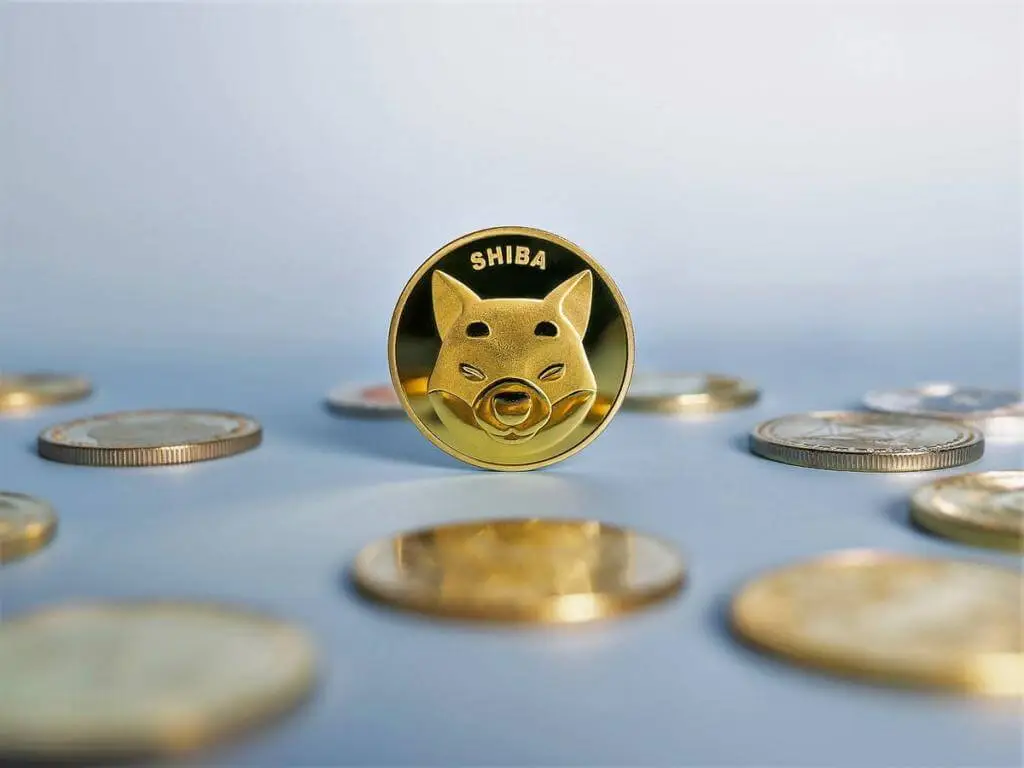Market capitalization, commonly known as market cap, is a crucial concept in the world of cryptocurrencies. It represents the total value of a cryptocurrency by multiplying its current price with its total circulating supply. The market cap provides investors with insights into the size and scale of a particular digital asset. It is a yardstick for comparing cryptocurrencies and assessing their popularity and potential. Understanding market cap is essential for making informed investment decisions in the dynamic and fast-paced crypto market. As an investor, I rely on market cap to gauge various crypto assets’ market positioning and growth potential. It helps me identify established coins with larger market caps and emerging projects with higher growth opportunities. By considering market cap and other factors, I can build a diversified portfolio that aligns with my investment goals and risk tolerance.
Content
Understanding Market Cap
Market capitalization, commonly referred to as a market cap, is a fundamental metric used in the world of cryptocurrencies to determine a particular digital asset’s overall value and size. It represents the total dollar value of a cryptocurrency’s outstanding shares or tokens. Market cap is calculated by multiplying the current price per coin or token by the total circulating supply.
How to market cap calculated in crypto
To calculate the market cap in the crypto space, I multiply the current price of a cryptocurrency by the number of coins or tokens currently in circulation. For example, if a cryptocurrency has a price of $10 per token and there are 10 million tokens in circulation, the market cap would be $100 million.
Comparison of market cap with traditional finance
While market cap is widely used in crypto and traditional financial markets, there are some notable differences. In traditional finance, the market cap is calculated for publicly traded companies by multiplying the current stock price by the total number of outstanding shares. It reflects the total value of a company’s equity.
In the crypto market, market cap serves a similar purpose but with some variations. Cryptocurrencies operate independently of traditional financial systems and are often decentralized. Therefore, market cap in the crypto space indicates the perceived value and demand for a specific digital asset.
Comparing market cap in crypto with traditional finance highlights the unique nature of cryptocurrencies. Unlike traditional stocks, cryptocurrencies are not tied to physical assets or revenue streams. Instead, their value is primarily driven by technology innovation, adoption, and market sentiment.
Understanding market cap is essential for investors as it allows them to assess the relative size and popularity of different cryptocurrencies. It provides insights into specific digital assets’ market positioning and potential growth. By considering market cap alongside other factors, such as trading volume and project fundamentals, I can make informed investment decisions in the dynamic and rapidly evolving crypto market.

Components of Market Cap
Understanding the components that contribute to the market cap can provide valuable insights for investors. I will explore two important components of market cap: circulating supply vs. total supply and the factors that influence market cap.
Circulating supply vs. total supply
In the realm of cryptocurrencies, market capitalization (or market cap) is a key metric that provides insights into the value and size of a particular digital asset. To understand market cap, it is important to distinguish between circulating and total supply.
Circulating supply refers to the number of coins or tokens currently in circulation and available to the public. It excludes locked or reserved tokens that developers or organizations may hold. On the other hand, total supply represents the maximum number of coins or tokens that will ever be created for that particular cryptocurrency.
For instance, consider a hypothetical cryptocurrency with a total supply of 1 billion tokens. However, if only 500 million tokens are circulating in the market, the market cap would be based on the circulating supply.
Factors influencing market cap
Various factors play a role in determining the market capitalization of a cryptocurrency. These factors contribute to the overall perception of value and investor demand for a particular digital asset.
- Coin/token price: The price of a coin or token directly impacts its market cap. As the price of a cryptocurrency increases, its market cap also rises, assuming other factors remain constant. For example, if a cryptocurrency has a price of $10 per token and there are 100 million tokens in circulation, the market cap would be $1 billion.
- Circulating supply: The circulating supply of a cryptocurrency is another crucial factor influencing market cap. An increase in the circulating supply tends to dilute the value of each coin or token, potentially leading to a decrease in market cap. Conversely, a decrease in circulating supply may contribute to a higher market cap.
- Market demand and trading volume: Market demand and trading volume significantly impact the market cap of a cryptocurrency. Higher demand and trading volume often indicate increased investor interest and confidence, potentially leading to a higher market cap. Factors such as adoption, partnerships, and overall market sentiment influence the demand for a particular digital asset.
Understanding the components of the market cap provides valuable insights into the dynamics of the cryptocurrency market. Investors can evaluate the potential growth and positioning of different cryptocurrencies by considering factors such as circulating supply, coin/token price, and market demand. Assessing market cap alongside other fundamental and technical indicators is crucial for making informed investment decisions in crypto.
Significance of Market Cap
Market Cap serves as a measure of a cryptocurrency’s size, an indicator of investor confidence, and is closely related to price volatility. We will delve into the significance of market cap in the crypto space.
Market cap as a measure of a cryptocurrency’s size
Market capitalization, known as market cap, is a crucial measure of a cryptocurrency’s size within the digital asset landscape. It reflects the total value of a cryptocurrency by multiplying its current price by the total number of coins or tokens in circulation. The market cap provides investors with an understanding of the relative scale and magnitude of different cryptocurrencies.
For example, if a cryptocurrency has a market cap of $1 billion, it signifies that the combined value of all its tokens in circulation is equivalent to that amount. Comparing the market caps of various cryptocurrencies allows investors to assess their relative prominence and market positioning.
Market cap as an indicator of investor confidence
Market cap is vital in determining investor confidence and sentiment toward a specific cryptocurrency. A higher market cap often indicates greater trust and interest from the investment community. Established cryptocurrencies with large market caps are generally viewed as more reliable and stable investment options.
Investors tend to associate a larger market cap with higher liquidity, widespread adoption, and greater market acceptance. A significant market cap is a vote of confidence from the market participants, implying that the cryptocurrency has demonstrated value and potential.
Relationship between market cap and price volatility
The market cap also exhibits a relationship with price volatility in the cryptocurrency market. Generally, cryptocurrencies with larger market caps are less volatile than smaller-cap cryptocurrencies. This is because cryptocurrencies with substantial market caps typically have more liquidity, deeper trading volumes, and a broader base of investors.
However, it is important to note that market cap alone does not guarantee stability or immunity from price fluctuations. Even cryptocurrencies with high market caps can experience significant price volatility due to factors such as market trends, regulatory changes, or adverse news events.
Investors should consider the market cap and price volatility relationship when making investment decisions. Higher market caps may offer relatively more stability, but conducting thorough research and analysis is essential to evaluate the overall potential and risks associated with a cryptocurrency.
Understanding the significance of market cap provides investors with valuable insights into the size, investor confidence, and price volatility of different cryptocurrencies. By considering market cap alongside other fundamental and technical indicators, investors can make more informed decisions and develop well-rounded investment strategies in the dynamic and evolving crypto market.
Market Cap Rankings and Cryptocurrency Hierarchy
Understanding market cap rankings and their implications is essential for investors in the crypto space. I will explore the top-ranked cryptocurrencies by market cap, the role of market cap in determining a cryptocurrency’s status, and the impact of market cap on investment decisions.
Top-ranked cryptocurrencies by market cap
In the ever-expanding world of cryptocurrencies, market capitalization (market cap) is a key factor in determining the hierarchy and rankings of digital assets. The top-ranked cryptocurrencies by market cap are typically those with the largest market capitalization values. These cryptocurrencies have gained significant recognition and investor interest.
For instance, Bitcoin, with its substantial market cap, consistently holds the top spot. Ethereum, Ripple, and other well-known cryptocurrencies also secure prominent positions based on their market caps. These rankings provide a snapshot of the most widely adopted and valued cryptocurrencies within the market.
Role of market cap in Determining a Cryptocurrency’s Status
Market cap is crucial in establishing a cryptocurrency’s status and reputation within the crypto community. A higher market cap suggests a more established and widely recognized digital asset. It reflects the confidence and trust of investors, developers, and the broader marketplace in a cryptocurrency.
Cryptocurrencies with substantial market caps often enjoy increased liquidity, higher trading volumes, and greater accessibility on various platforms. Their status as top-ranked cryptocurrencies grants them better visibility and acceptance within the industry. Moreover, cryptocurrencies with larger market caps tend to attract more institutional investors, further solidifying their status and legitimacy.
Impact of market cap on investment decisions
Market cap significantly influences investment decisions in the crypto space. Investors often consider market cap as an indicator of a cryptocurrency’s potential for growth and stability. Higher market cap cryptocurrencies are perceived as less risky, with a better chance of withstanding market fluctuations and maintaining their value over time.
However, it’s crucial to note that market cap alone should not be the sole determining factor in investment decisions. Other factors, such as project fundamentals, technological innovation, team expertise, and market trends, must also be considered.
I use the market cap as a starting point to evaluate different cryptocurrencies. By analyzing the market cap rankings, I can identify cryptocurrencies that have gained significant traction and credibility. I then delve into deeper research to understand the underlying technology, project roadmap, and potential market demand.
Market cap rankings play a vital role in the cryptocurrency hierarchy, providing insights into the size, recognition, and investor confidence in different digital assets. While market cap is an important factor in investment decisions, I believe in conducting comprehensive due diligence to assess all relevant aspects before making informed investment choices in the dynamic and evolving crypto market.
Criticisms and Limitations of Market Cap
Market capitalization (market cap) is a widely used metric in the world of cryptocurrencies, but it is not without its criticisms and limitations. While it provides valuable insights into the relative size and value of digital assets, certain factors must be considered.
Market cap as a flawed metric for valuation
Market cap is often criticized as a flawed metric for valuation in the crypto space. It solely considers the price and circulating supply of a cryptocurrency, disregarding other important factors such as project fundamentals, technological advancements, and real-world adoption. As a result, more than the market cap is needed to provide a comprehensive picture of a cryptocurrency’s true value and potential.
For instance, consider two cryptocurrencies with the same market cap. One cryptocurrency may have a strong underlying technology, a dedicated community, and partnerships with established institutions, while the other may lack these essential elements. Relying solely on the market cap would not capture the difference in value between these two cryptocurrencies.
Manipulation of market cap and its implications
Market cap is susceptible to manipulation, which can distort the true value of a cryptocurrency. Pump-and-dump schemes, where individuals or groups artificially inflate a cryptocurrency’s price and trading volume to create a false perception of value, can lead to an inflated market cap.
These manipulative practices can mislead investors and cause significant financial losses. Investors should be cautious when evaluating cryptocurrencies solely based on their market caps and conduct thorough research to ensure the project’s legitimacy.
Alternative metrics to consider alongside market cap
To overcome the limitations of market cap, it is essential to consider alternative metrics when evaluating cryptocurrencies. Some of these metrics include:
- Trading volume: Assessing the trading volume of a cryptocurrency provides insights into its liquidity and market activity. Higher trading volumes generally indicate a more vibrant market and greater investor interest.
- Tokenomics: Analyzing the tokenomics of a cryptocurrency, such as its token distribution, inflation rate, and token utility, can provide a deeper understanding of its value proposition and long-term viability.
- Community engagement: Evaluating the engagement and activity within a cryptocurrency’s community can gauge the level of support and adoption it has garnered.
By considering these alternative metrics alongside market cap, investors can make more informed decisions and comprehensively understand a cryptocurrency’s potential.
While the market cap is a commonly used metric in the crypto space, it is important to recognize its limitations. By acknowledging its flaws, understanding the potential for manipulation, and incorporating alternative metrics into the evaluation process, investors can navigate the dynamic crypto market more effectively and make informed investment decisions.
3 Factors Affecting Market Cap
The market capitalization (market cap) of cryptocurrencies is influenced by various factors that shape the crypto market dynamics. Understanding these factors is crucial for investors seeking to navigate the volatile crypto landscape.
Market trends and overall cryptocurrency market conditions
Market cap is highly responsive to market trends and the overall conditions of the cryptocurrency market. Fluctuations in the prices and sentiments of major cryptocurrencies can significantly impact the collective market cap. Conversely, bearish trends can lead to market cap contractions.
As an investor, I closely monitor market trends and assess the overall sentiment to gauge the potential impact on the market cap. I can make more informed decisions regarding my investment strategies by staying informed about market conditions.
News and events impacting individual cryptocurrencies
News and events play a pivotal role in shaping the market cap of individual cryptocurrencies. Positive news, such as new partnerships, technological advancements, or regulatory support, can trigger significant market cap growth. Conversely, negative news, such as security breaches, regulatory crackdowns, or major project setbacks, can lead to market cap declines.
For instance, when a well-known exchange lists a new cryptocurrency or a project achieves a significant milestone, it attracts investor attention and drives up its market cap. Conversely, hacking incidents or regulatory uncertainty can cause the market cap to plummet.
Regulatory developments and government interventions
Regulatory developments and government interventions can substantially influence market cap in the crypto space. Introducing favorable regulations can instill confidence in investors, leading to increased market cap. Conversely, regulatory crackdowns or unfavorable policies can create uncertainty, causing the market cap to shrink.
For example, when a country announces plans to embrace cryptocurrencies and create a clear regulatory framework, it can spark optimism among investors, resulting in a surge in market cap. On the other hand, if a government imposes strict regulations or bans cryptocurrencies altogether, the market cap can suffer a significant setback.
Considering the impact of regulatory developments and government interventions is crucial when assessing the potential market cap of cryptocurrencies. I stay updated with regulatory news and closely analyze its implications to make informed investment decisions.
Market cap in the crypto market is influenced by various factors, including market trends, news and events, and regulatory developments. Stay informed, monitor market conditions, and conducting thorough research are essential to navigate the crypto market successfully and understanding the factors that affect the market cap.
Interpreting Market Cap Data
Market capitalization (market cap) data provides valuable insights into the cryptocurrency market. By analyzing market cap, investors can make informed decisions and gain a deeper understanding of the relative size and value of different cryptocurrencies.
Market cap comparisons across different cryptocurrencies
Comparing market caps across different cryptocurrencies allows investors to assess their relative positions within the market. By examining the market cap rankings, I can identify the top cryptocurrencies with the largest market caps, indicating their widespread adoption and investor confidence. This comparison helps evaluate the market’s perception of different cryptocurrencies and their respective market shares.
For instance, when comparing the market caps of Bitcoin and Ethereum, I can observe that Bitcoin often has a significantly larger market cap. However, diving deeper into the analysis, I can recognize the potential for growth in Ethereum due to its unique features and robust ecosystem.
Analyzing market cap trends and historical data
Analyzing market cap trends and historical data provides insights into the growth and stability of cryptocurrencies over time. By studying the historical market cap data, I can identify patterns and trends, allowing for a more comprehensive assessment of a cryptocurrency’s performance.
For example, if I notice a cryptocurrency’s market cap consistently increasing over an extended period, it may indicate strong market demand and sustained growth. Conversely, a declining or stagnant market cap could signal waning interest or challenges within the project.
Market cap about other key metrics (e.g., trading volume)
The market cap should be considered alongside other key metrics, such as trading volume, to gain a more comprehensive understanding of a cryptocurrency’s market dynamics. Trading volume reflects a cryptocurrency’s liquidity and activity, providing additional insights into its market dynamics.
By analyzing the market cap about trading volume, I can assess the level of market interest and liquidity of a cryptocurrency. High trading volumes coupled with a substantial market cap indicate a vibrant market and increased investor participation.
Moreover, considering market cap about other metrics, such as user adoption, developer activity, or network effects, can provide a more holistic view of a cryptocurrency’s potential and market positioning.
Interpreting market cap data involves comparing market caps across different cryptocurrencies, analyzing trends and historical data, and considering market cap about other key metrics. These approaches allow investors to gain valuable insights and make informed decisions in the dynamic and evolving crypto market.
Market Cap and Investment Strategies
When investing in cryptocurrencies, understanding market capitalization (market cap) is crucial for developing effective investment strategies. The market cap provides valuable insights to guide long-term investment decisions, help balance risk and potential returns, and inform diversification strategies within crypto portfolios.
Market cap as a factor in long-term investment decisions
Market cap plays a significant role in determining the long-term potential of a cryptocurrency. By considering market cap, I can assess the size and maturity of a project, as well as its ability to withstand market fluctuations and potential challenges. Cryptocurrencies with larger market caps often have established user bases, widespread adoption, and greater stability.
For example, when evaluating potential long-term investments, I prioritize cryptocurrencies with substantial market caps as they are more likely to have proven their value and resilience over time.
Balancing risk and potential returns based on market cap
Market cap is a valuable metric for balancing risk and potential returns in cryptocurrency investments. While cryptocurrencies with larger market caps may offer stability, they may also have slower growth rates than smaller-cap cryptocurrencies with higher growth potential.
I consider both large-cap and small-cap cryptocurrencies in my investment strategy, balancing the potential for higher returns with the associated risks. I allocate a portion of my portfolio to established cryptocurrencies with solid market caps to mitigate risk while also exploring opportunities with promising smaller-cap projects that align with my risk tolerance and investment goals.
Market cap considerations for diversification in crypto portfolios
Diversification is a crucial strategy in building a resilient crypto portfolio. Market cap considerations play a vital role in diversifying investments across different cryptocurrencies. I aim to diversify my portfolio by investing in cryptocurrencies with varying market caps, as it helps spread risk and potential returns across different market segments.
For instance, I might allocate a portion of my portfolio to cryptocurrencies with large market caps to provide stability while also including smaller-cap cryptocurrencies with innovative technologies and growth potential.
By carefully considering the market cap in the diversification process, I can capture opportunities in established and emerging projects while minimizing exposure to any single cryptocurrency.
Market cap plays a crucial role in shaping investment strategies in the crypto market. Market cap helps inform long-term investment decisions, balance risk and potential returns, and guide diversification strategies within crypto portfolios. Incorporating market cap analysis into my investment approach enhances the potential for success in the dynamic and evolving crypto market.
Market Cap and New Crypto Projects
Regarding new crypto projects, market capitalization (market cap) plays a significant role in understanding their potential and making informed investment decisions. Analyzing market cap expectations, identifying factors that influence market cap growth, and considering the trade-offs between low-cap and high-cap cryptocurrencies are crucial.
Market cap expectations for Newly launched cryptocurrencies
For newly launched cryptocurrencies, market cap expectations can vary widely. Some projects may experience rapid growth and achieve substantial market caps quickly, while others may need help to gain traction. Evaluating the market cap expectations requires careful consideration of several factors, including the project’s unique value proposition, technology, team, and market demand.
When investing in new projects, I closely examine the underlying fundamentals and assess the potential for market cap growth based on my research and analysis.
Factors influencing market cap growth for new projects
Several factors can significantly influence the market cap growth of new crypto projects. These factors include the project’s adoption rate, community engagement, technological advancements, partnerships, regulatory developments, and market trends. A strong and engaged community, consistent project updates, and positive market sentiment can contribute to significant market cap growth.
As an investor, I pay close attention to these factors and analyze how they may impact the market cap growth of new projects. I seek projects that demonstrate potential for sustained growth and have a solid foundation for long-term success.
Investing in low-cap vs. high-cap cryptocurrencies
Investing in low-cap and high-cap cryptocurrencies comes with different considerations and potential trade-offs. Low-cap cryptocurrencies offer greater growth potential, as even a small increase in the market cap can lead to substantial returns. However, they also tend to be riskier and more volatile.
On the other hand, high-cap cryptocurrencies often provide more stability and liquidity, but their growth potential may be more limited compared to smaller-cap counterparts.
When constructing my investment portfolio, I consider a balanced approach. I allocate a portion of my portfolio to high-cap cryptocurrencies to provide stability while also exploring opportunities in select low-cap projects that align with my risk tolerance and show promising growth potential.
Market cap plays a crucial role in evaluating and investing in new crypto projects. By managing market cap expectations, analyzing factors influencing market cap growth, and considering the trade-offs between low-cap and high-cap cryptocurrencies, I can make more informed investment decisions in the dynamic and ever-evolving crypto market.
Market Cap and Market Manipulation
In the world of cryptocurrencies, market manipulation can significantly impact market cap, distorting the true value of assets and affecting investors’ trust. Understanding different manipulation techniques, their effect on market cap, and strategies to protect oneself from such practices is crucial for navigating the crypto market safely.
Pump and dump schemes and their effect on market cap
Pump and dump schemes are a common form of market manipulation in the crypto space. In these schemes, manipulators artificially inflate a particular cryptocurrency’s price and market cap by spreading hype and misinformation. Once the price reaches a peak, they sell off their holdings, causing a sudden drop in price and market cap.
These schemes can deceive unsuspecting investors lured by the illusion of quick profits. When participating in the market, I remain cautious of sudden price spikes and excessive hype surrounding a particular cryptocurrency, as they may indicate a potential pump-and-dump scheme.
Strategies used to inflate or deflate market cap artificially
Market manipulators employ various strategies to manipulate market cap artificially. Wash trading involves creating fake trading volumes to create an illusion of market activity, thus inflating the market cap. Spoofing involves placing fake buy orders to deceive other market participants. Insider trading, illegal, can also impact market cap.
As an investor, I remain vigilant and thoroughly research the cryptocurrencies I consider. I look for signs of suspicious trading patterns, unusual market movements, and any potential indicators of market manipulation that could artificially inflate or deflate the market cap.
Protecting oneself from market manipulation
Protecting oneself from market manipulation requires adopting a cautious approach and implementing certain strategies. I diversify my portfolio to reduce the impact of any single cryptocurrency’s market manipulation. I also stay informed through reliable sources, following credible market analysis and avoiding unsubstantiated rumors or social media hype.
Additionally, I utilize technical analysis and fundamental research to assess the underlying value of a cryptocurrency beyond its market cap. By understanding the project’s technology, team, community, and real-world utility, I can make more informed investment decisions.
Furthermore, I keep a close eye on regulatory developments and the actions taken by reputable exchanges to combat market manipulation. Supporting initiatives that promote transparency, regulation, and investor protection can contribute to a healthier and more trustworthy crypto market.
Market manipulation can significantly impact the market cap in the crypto industry. By being aware of pump-and-dump schemes, understanding manipulation strategies, and taking steps to protect themselves, investors can navigate the market more confidently and mitigate the risks associated with market manipulation.
Frequently Asked Questions
What is the formula for calculating market cap in crypto?
Market cap in crypto is calculated by multiplying the circulating supply of a cryptocurrency by its current market price.
How accurate is the market cap in determining a cryptocurrency’s value?
Market cap is just one factor in determining a cryptocurrency’s value. Various factors, including market manipulation, liquidity, and overall demand for the asset, can influence it.
Can market cap be used to compare different cryptocurrencies?
Yes, a market cap can be used to compare different cryptocurrencies’ relative size and value. However, it’s important to consider other factors like circulating supply, trading volume, and overall market trends when making investment decisions.
What impact does market cap have on a cryptocurrency’s liquidity?
A cryptocurrency with a high market cap typically has more liquidity than a lower-cap cryptocurrency. This is because there is a greater demand for the asset and, therefore, more buyers and sellers in the market.
Can market cap change over time?
Yes, the market cap is subject to change based on fluctuations in the price of a cryptocurrency and changes in its circulating supply. This means that the market cap of a cryptocurrency can increase or decrease over time.
Conclusion
In conclusion, market capitalization is an important metric for evaluating cryptocurrencies, but it has limitations. While it provides a quick and easy way to compare the relative size of different cryptocurrencies, it only tells part of the story about a project’s potential or its true value. As an AI language model, I cannot provide personal examples. Still, investors should not rely solely on the market cap when making investment decisions in the cryptocurrency industry. Instead, they should consider other factors, such as the project’s development team, community support, and real-world use cases, to understand its long-term prospects better.

James has been a crypto enthusiast for a year. He’s an avid watcher of all the latest developments in the space, and enjoys predicting what will happen next with his favorite coins.
He lives in his hometown of New York City with his wife and two sons. His hobbies include watching movies, playing basketball, and reading about how to survive disasters that may occur from climate change or an asteroid impact!












